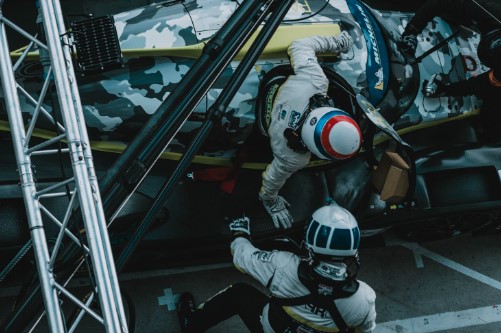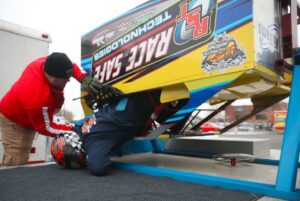
Minimizing On-Track Dangers: Ensuring Safety During Races
Safety is paramount in the world of motorsports, where high speeds and intense competition can create potentially dangerous situations on the track. As drivers push the limits of their vehicles and skills, it’s essential to implement measures to minimize on-track dangers and protect the safety of participants and spectators alike. In this comprehensive guide, we’ll explore the strategies and technologies used to ensure safety at the Winchester Speedway, a historic racing venue with a commitment to excellence in safety, and discuss broader initiatives within the motorsports community to enhance track safety.

The Importance of Safety in Motorsports
Safety has always been a top priority in motorsports, driven by a commitment to protecting the lives and well-being of everyone involved in racing events.
Risk Management
Managing risk is an inherent part of motorsports, where drivers face the potential for injury or worse every time they take to the track. By identifying potential hazards and implementing safety measures, organizers can mitigate risks and create a safer racing environment.
Continuous Improvement
The motorsports community is constantly striving to improve safety standards and practices, driven by advancements in technology, research, and education. Through ongoing innovation and collaboration, safety initiatives aim to evolve and adapt to changing conditions and challenges.
Safety Measures at the Winchester Speedway
The Winchester Speedway, located in Winchester, Indiana, is a historic racing venue with a rich tradition of motorsports excellence. Committed to maintaining the highest standards of safety, the Speedway employs a range of measures to ensure the well-being of participants and spectators.
Track Design and Maintenance
The design and maintenance of the track play a crucial role in ensuring safety at the Winchester Speedway. Regular inspections, repairs, and upgrades help maintain track integrity and reduce the risk of accidents caused by surface irregularities or debris.
Safety Barriers and Fencing
Safety barriers and fencing are essential features of any racing facility. Effectively providing protection for drivers and spectators in the event of a crash or collision. At the Winchester Speedway, impact-absorbing barriers and high-strength fencing help mitigate the force of impacts and prevent vehicles from leaving the track.
Emergency Response and Medical Facilities
In the event of an accident or injury, prompt medical attention is critical. The Winchester Speedway is equipped with on-site medical personnel, ambulances, and medical facilities to provide immediate care to drivers and spectators in need.
Advancements in Safety Technology
In addition to traditional safety measures, advancements in technology have revolutionized safety in motorsports, introducing innovative solutions to mitigate risks and improve overall safety.
HANS Devices
Head and Neck Support (HANS) devices have become standard safety equipment in motorsports, reducing the risk of head and neck injuries in high-speed crashes. These devices are designed to restrain the head and prevent excessive movement during impact, reducing the risk of whiplash and other serious injuries.
Impact-Absorbing Materials
Modern race cars are equipped with impact-absorbing materials. The likes of energy-absorbing foam, crushable structures, and composite materials. These are to dissipate energy and reduce the force of impacts in crashes. These materials help protect drivers and passengers from injury and minimize the risk of severe trauma.
Data Acquisition Systems
Data acquisition systems, including onboard telemetry and sensors, provide valuable insights into vehicle performance and driver behavior. By analyzing data from crashes and near-misses, teams can identify areas for improvement and implement changes to enhance safety.
Driver Training and Education
Education and training are essential components of safety in motorsports. Effectively equipping drivers with the knowledge and skills they need to navigate the track safely. To help react effectively in emergency situations.
Driver Safety Briefings
Before each racing event, drivers receive comprehensive safety briefings covering track rules, safety procedures, and emergency protocols. These briefings ensure that drivers are aware of potential risks and know how to respond appropriately in the event of an accident or emergency.
Advanced Driver Training Programs
Many racing organizations offer advanced driver training programs that focus on safety, defensive driving techniques, and accident avoidance strategies. These programs provide drivers with hands-on experience and practical skills to enhance their safety on the track.
Conclusion: A Commitment to Safety
Safety is a top priority in motorsports. Organizations like the Winchester Speedway look to ensure the well-being of everyone during racing events. Through a combination of track design, safety measures, technological advancements, and driver education. The motorsports community continues to push the boundaries of safety and innovation.
As the sport evolves and new challenges emerge, the commitment to safety remains unwavering. By working together and embracing advancements in technology and best practices. The motorsports community can continue to minimize on-track dangers and create a safer environment. One for drivers, spectators, and all those who love the thrill of racing.
